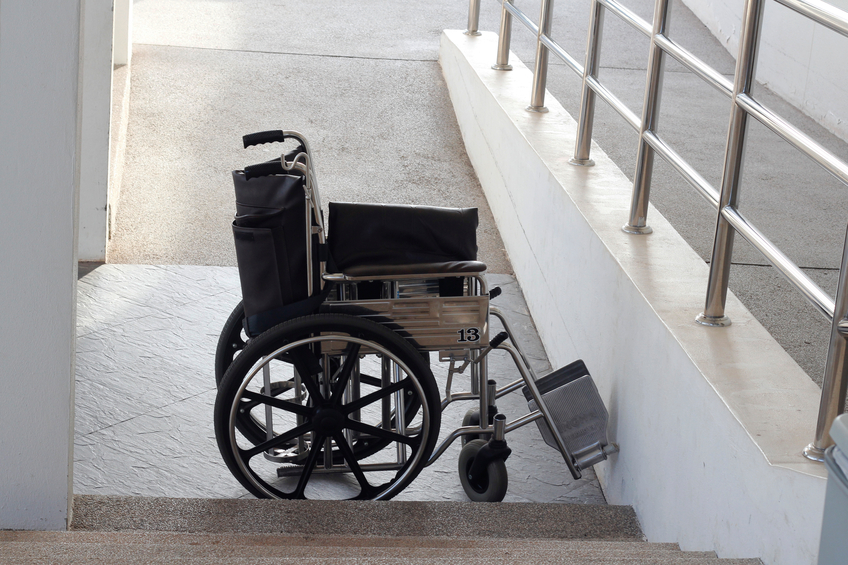Building Design 15 PDH Discount Package
Courses in this Package
Americans with Disabilities Act (ADA) Overview (A02-005)
An Introduction to Precision Measurement Laboratories (D03-005)
Building Elevator Systems (A06-001)
Performance-Based Design (A01-001)
VA Building Information Modeling (BIM) (B03-002)

This online engineering PDH course provides an overview of the Americans with Disabilities Act as it applies to facility design.
For individuals with disabilities, the Americans with Disabilities Act gives civil rights protections similar to those provided to individuals on the basis of race, color, sex, national origin, age, and religion. It guarantees equal opportunity for individuals with disabilities in public accommodations, employment, transportation, state and local government services, and telecommunications.
This 2 PDH online course is intended for all engineers involved in the design of facilities accessible to the public and regulated by the
This PE continuing education course is intended to provide you with the following specific knowledge and skills:
- Familiarizing with the types of facilities covered
- Understanding "public accommodation"
- Learning about the various requirements for accessible facilities
- Understanding when a "direct threat" to health or safety is present
- Understanding "readily achievable" barrier removal for existing facilities
- Familiarizing with the legal enforcement mechanisms available
- Learning about available tax credits and deductions for employers
In this professional engineering CEU course, you need to review the course document titled, "American with Disabilities Act (ADA) Overview" which is based on the original document (http://www.ada.gov/qandaeng.htm) published by the U.S. Equal Employment Opportunity Commission of the Civil Rights Division of the U.S. Department of Justice (DOJ), last updated on
Upon successful completion of the quiz, print your Certificate of Completion instantly. (Note: if you are paying by check or money order, you will be able to print it after we receive your payment.) For your convenience, we will also email it to you. Please note that you can log in to your account at any time to access and print your Certificate of Completion.

This online engineering PDH course discusses architectural engineering issues in design of a wide variety of precision measurement equipment laboratories (PMELs), including the basic requirements which apply to any PMEL. Architectural, structural, mechanical and electrical issues are all considered.
A Precision Measurement Equipment Laboratory is a facility in which the repair, calibration and modification of test, measurement and diagnostic equipment (TMDE), including precision measurement equipment laboratory standards and automatic test equipment, take place. This practice is also known as metrology; the science of measurement.
This 3 PDH online course is intended for professional engineers, architects and construction managers interested in the design and construction of precision measurement laboratories.
This PE continuing education course is intended to provide you with the following specific knowledge and skills:
- Learning about internal and site layouts, and location of interfaces between the facility structure and equipment items
- Understanding the commissioning process and its importance in ensuring that a facility and its components will perform as designed and intended
- Learning how to ensure that mission and user requirements, as well as occupant health and safety are considered during design, construction and operations for material selection and environmental systems
- Learning how to locate rooms, spaces, and equipment to ensure orderly workflow, and provide security and property management
- Understanding why a facility site must be isolated from sources of vibration such as railroads, local heavy vehicle or aircraft traffic, crane or machine operations, foot traffic, or similar disturbances
- Learning how to use expansion/isolation joints in the concrete floor on the outside toe of the walls defining the conditioned area to isolate the thermal mass of the floor and reduce vibration transmission
- Learning how to use specialized shock mounts, air bag supports, or isolated massive blocks in your design
- Understanding the importance of including a covered equipment entry in your design
In this professional engineering CEU course, you need to review the document titled, “An Introduction to Precision Measurement Laboratories”.
Once you complete your course review, you need to take a multiple-choice quiz consisting of fifteen (15) questions to earn 3 PDH credits. The quiz will be based on the entire document.
Upon successful completion of the quiz, print your Certificate of Completion instantly. (Note: if you are paying by check or money order, you will be able to print it after we receive your payment.) For your convenience, we will also email it to you. Please note that you can log in to your account at any time to access and print your Certificate of Completion.

This online engineering PDH course provides criteria for design and construction of elevators. The requirements laid down in this course compliment non-governmental standards such as those published by ASME and NFPA.
Elevators enable millions of public buildings to function effectively by seamlessly moving people into them, through them and out of them. Ranging from retail shops to railway stations and airports to schools, car parks, hotels, or stadiums, each of these types of buildings has a unique set of requirements that need to be met.
The elevator and escalator industry is a very unique trade among other building services equipment industries. The equipment suppliers usually have lines of basic products. However, each installation is site specific i.e. each installation is tailor-made to suit individual site's constraints and requirements.
This 6 PDH online course is applicable to architects and engineers who are involved in the design of facility's elevators. Because elevators are complex multi-disciplined products, this course provides guidance to the architectural and engineering disciplines to understand their roles in elevator design.
This PE continuing education course is intended to provide you with the following specific knowledge and skills:
- Learning how to determine correct number and type of transportation devices
- Learning how to determine right sizes and speeds of the transportation devices
- Learning how to zone and locate the transportation devices for smooth flow of people and goods
- Knowing the principle of operation of traction and hydraulic elevators including roping and hoisting mechanisms
- Understanding geared and gearless type traction elevators
- Understanding the difference between the direct-acting and suspended hydraulic elevator
- Familiarizing with the codes and standards governing the design and installation of elevators
- Understanding the architectural, structural, electrical, mechanical design criteria
- Understanding the fire protection, emergency power and HVAC criteria
- Understanding elevator control and safety features including independent service, attendant service, inspect and fire service
- Applying general good practices: Do's and Don'ts
In this professional engineering CEU course, you need to review the document titled, "Building Elevator Systems".
Upon successful completion of the quiz, print your Certificate of Completion instantly. (Note: if you are paying by check or money order, you will be able to print it after we receive your payment.) For your convenience, we will also email it to you. Please note that you can log in to your account at any time to access and print your Certificate of Completion.

This online engineering PDH course provides an overview of performance-based design process. Performance-based design is the process or methodology used by design professionals to create buildings that protect functionality and the continued availability of services. Building performance is an indicator of how well a structure supports the defined needs of its users. Although this material is written for schools, it is applicable to all buildings.
This 1 PDH online course is applicable to structural engineers, design professionals, construction contractors, building owners and other technical personnel who are interested in gaining a better understanding of performance-based design.
This PE continuing education course is intended to provide you with the following specific knowledge and skills:
- Understanding prescriptive vs. performance-based design
- Understanding the performance-based design process
- Understanding acceptable risk and performance levels
- Learning about considerations for achieving continuous operation performance level
- Understanding performance-based flood design, high-wind design and seismic design
In this professional engineering CEU course, the student will review Chapter 2 of the FEMA publication "Design Guide for Improving School Safety in Earthquakes, Floods, and High Winds", FEMA P-424, December 2010.
Upon successful completion of the quiz, print your Certificate of Completion instantly. (Note: if you are paying by check or money order, you will be able to print it after we receive your payment.) For your convenience, we will also email it to you. Please note that you can log in to your account at any time to access and print your Certificate of Completion.

This online engineering PDH course is an overview of the VA's requirements related to the use of BIM on VA projects.
In today's complex building designs there is a movement to use BIM (Building Information Modeling) as a tool for both design and construction. In addition, BIM is used in facility management. The VA's Office of Construction and Facilities Management (CFM) has determined that Building Information Modeling (BIM) represents both an enhanced technology and a process change for the architecture-engineering-construction-facilities management industry. VA is committed to moving both the organization and its service providers to BIM as effectively and efficiently as possible, and to integrating BIM process requirements and Integrated Project Delivery (IPD) methodologies into its delivery requirements.
This 3 PDH online course is applicable to all engineers, architects, design and construction personnel, technical staff and facility personnel who are interested in gaining a better understanding of BIM technology.
This PE continuing education course is intended to provide you with the following specific knowledge and skills:
- Implementation of BIM in VA projects
- BIM Management Plan
- BIM Roles and Responsibilities
- Model Sharing
- Collaboration Procedures
- Modeling Requirements
In this professional engineering CEU course, you need to review the publication, "VA BIM Guide, v1.0", published by the Department of Veteran Affairs, dated April 2010.
Upon successful completion of the quiz, print your Certificate of Completion instantly. (Note: if you are paying by check or money order, you will be able to print it after we receive your payment.) For your convenience, we will also email it to you. Please note that you can log in to your account at any time to access and print your Certificate of Completion.